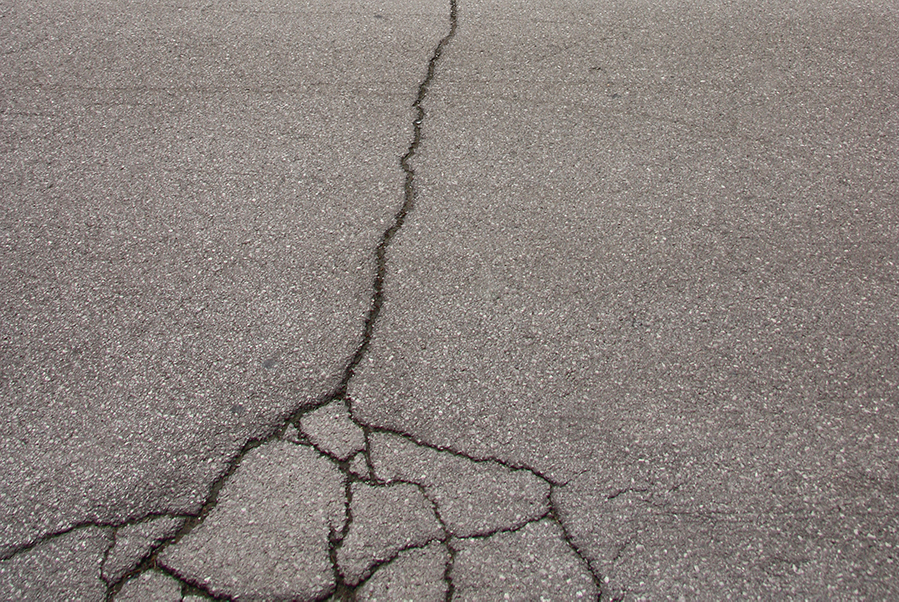One repair that is typically recommended before completing a sealcoating application is crack filling. This includes applying hot or cold crack filler to seal cracks in the pavement so moisture does not find its way into the lower layers of asphalt. Properly filling the cracks before the sealcoat is applied will help protect the asphalt from significant damage.
Did you know there are several types of cracks that can appear in your parking lot?
Each type of crack has its own characteristics that need to be identified for it to be properly repaired. As a business owner or property manager, understanding the various types of cracks in your asphalt can help you when it comes time for repairs and sealcoating.
1. Transverse Cracks
These cracks run perpendicular to the center line of the road. As your asphalt ages, these are likely the first cracks to appear and are mostly caused by temperature changes. The shrinkage of pavement due to low temperatures and aging of the asphalt binder cause these cracks to form.
When caught early on, a crack filler can be applied to repair the cracks. Filling them will prevent further moisture intrusion and stop the crack from spreading. If you have a section that has several cracks or severe cracking, your asphalt company may recommend complete removal of the section and replace it with fresh asphalt.
2. Longitudinal Cracks
Running parallel to the pavement’s center line or direction in which the pavement was laid, longitudinal cracks can be a sign of a much larger issue. Typically caused by poor paving joint construction or long-term temperature shifts, however, longitudinal cracks can be triggered by many issues.
Similar to transverse cracks, these cracks can be treated with a crack filler if caught soon in their development. More severe cracking requires significant repair, including removing the damaged asphalt and replacement.
3. Block Cracking
This type of cracking looks exactly as its name eludes; blocks. Block cracks are interconnected cracks that divide the pavement into rectangular pieces. These cracks are likely caused by the asphalt binder. Either it has an inability to expand and contract with temperature cycles, it is aging and hardening, or there was a poor choice of binder in the mix design. This can cause the block cracks to show quickly after installation.
Block cracks typically do not affect the lower layers of the asphalt. This means a thin overlay or surface treatment can seal the cracks. Luckily, a layer of sealcoating can do the trick most of the time and help prevent future cracking.
4. Edge Cracking
These cracks form along the edge of the asphalt, before it reaches the curb or soil. Edge cracks are typically caused by heavy loads running over the edge of the pavement where it is not well supported, but can also be caused by seasonal freezing and thaws.
There is no simple answer as to what the best way to repair an edge crack is. It will depend on the damage and what is thought to have caused it. Consult with your asphalt provider before you start any repairs as it could end up costing you significantly more.
Work With A Pro
Professional installation and maintenance of an asphalt parking lot or roadway is essential. If your pavement is showing signs of cracking, you will want to have it repaired as quickly as possible to prevent further damage. Doing so will ensure significant, and more expensive repairs are not needed and it can extend the life of your asphalt.
Toste Construction provides professional sealcoating services, including pothole repair, to the greater Moorseville area. Contact our team today to schedule your FREE estimate. We are experienced and work on parking lots of all sizes for both residential and commercial projects throughout western North Carolina.

